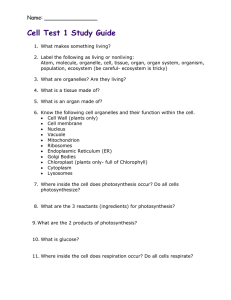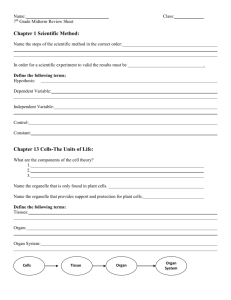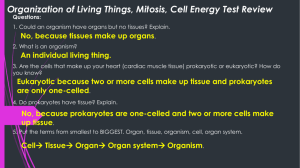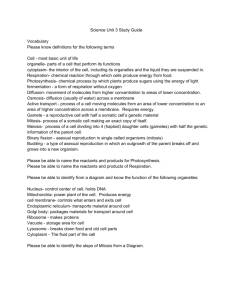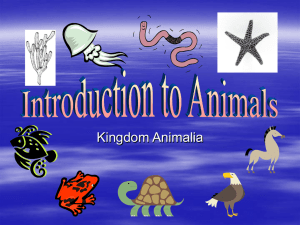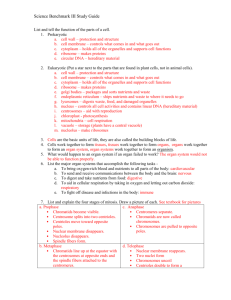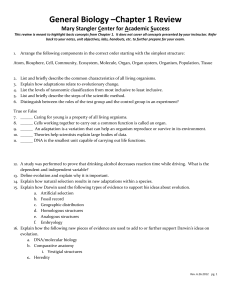Living Environment Study Guide: Classification, Cells, Systems
advertisement
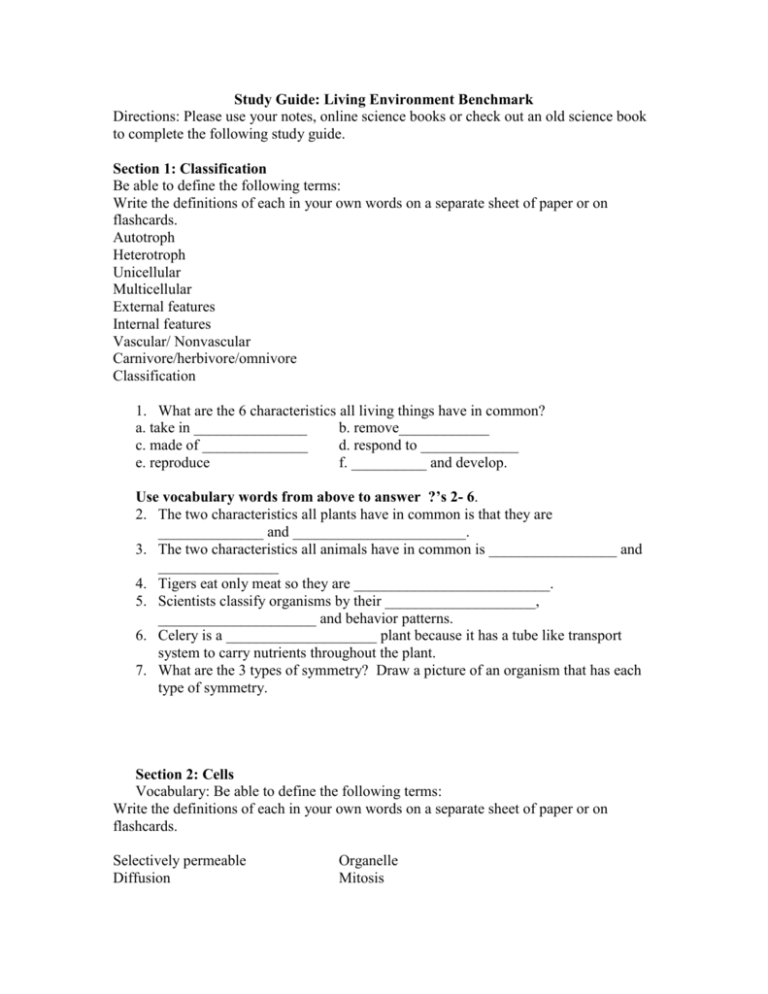
Study Guide: Living Environment Benchmark Directions: Please use your notes, online science books or check out an old science book to complete the following study guide. Section 1: Classification Be able to define the following terms: Write the definitions of each in your own words on a separate sheet of paper or on flashcards. Autotroph Heterotroph Unicellular Multicellular External features Internal features Vascular/ Nonvascular Carnivore/herbivore/omnivore Classification 1. What are the 6 characteristics all living things have in common? a. take in _______________ b. remove____________ c. made of ______________ d. respond to _____________ e. reproduce f. __________ and develop. Use vocabulary words from above to answer ?’s 2- 6. 2. The two characteristics all plants have in common is that they are ______________ and _______________________. 3. The two characteristics all animals have in common is _________________ and ________________ 4. Tigers eat only meat so they are __________________________. 5. Scientists classify organisms by their ____________________, _____________________ and behavior patterns. 6. Celery is a ____________________ plant because it has a tube like transport system to carry nutrients throughout the plant. 7. What are the 3 types of symmetry? Draw a picture of an organism that has each type of symmetry. Section 2: Cells Vocabulary: Be able to define the following terms: Write the definitions of each in your own words on a separate sheet of paper or on flashcards. Selectively permeable Diffusion Organelle Mitosis Osmosis Respiration Photosystheis Use the following word bank to answer the questions below. You may use words more than once. Oxygen Carbon dioxide Glucose Photosynthesis Respiration Sunlight Energy Mitochondria Chloroplasts 1. What are the materials necessary for plants to perform photosynthesis? __________________ , _____________, and ________________________. 2. What are the products of photosynthesis? _____________________ and ______________________. 3. The purpose of respiration is to produce ________________ for all living things. 4. Most of the energy produced during respiration is made in the ___________________, or powerhouse of the cell. 5. Please fill in the table below. Organelle Cell Wall Function Plant /Animal /Both Cell Membrane Nucleus Vacuole 6. Which process is responsible for an organism growth and repair? Mitosis or Diffusion (circle) 7. Which process is responsible for the transport of materials in and out of the cell? Mitosis or Diffusion (circle) 8. Look at the table above, which organelle allows cells to perform diffusion? Part 3: Organ Systems 1. Put the 5 levels of organization listed below in order from smallest to largest. Organ Organ System Tissue Organism Cell ____________ , ______________, ________________, ____________, _________ 2. Fill in the following chart. Organ System Function Circulatory To transport needed materials throughout the body and carry waste away from cells. 2 sample organs Respiratory Lungs, trachea Immune White blood cells Provides support and helps you move Digestive 1 type of tissue that would make up an organ and why. Connectiveconnective tissue supports your body and connects its parts. Epithelial- lines all of your internal organs. 3. What is the only organ system not necessary for an individuals survival but is necessary for the survival of a species? ________________________________________ 4. Explain why no one organ system can be picked out as the most important. __________________________________________________________________ __________________________________________________________________ __________________________________________________________________ 5. What do a fish, frog and human respiratory system all have in common? _____________________________________________________________________ _____________________________________________________________________

